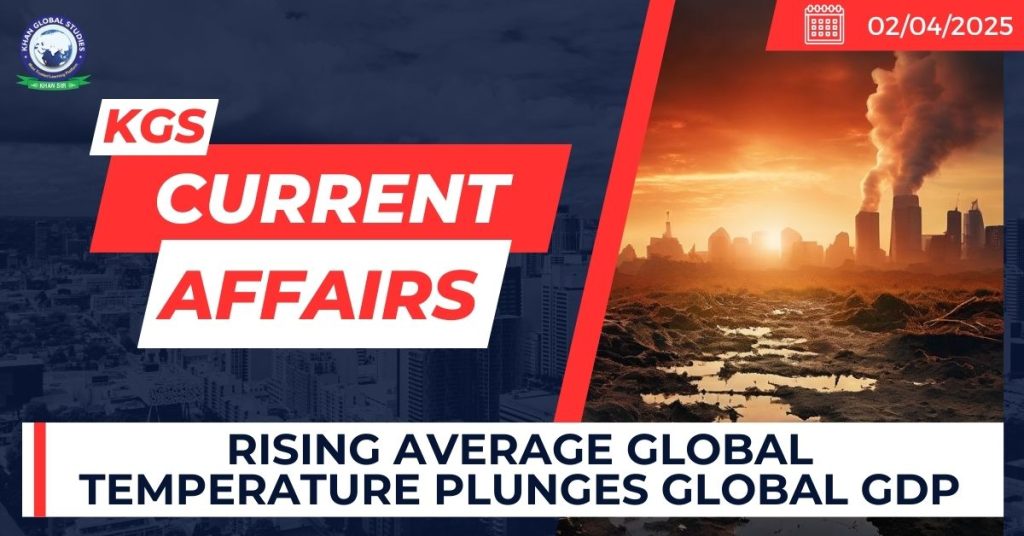Context:
A recent study by Australian researchers has revealed that a 4-degree Celsius rise in global temperatures could lead to a 40% reduction in world GDP by the year 2100.
More on the News
- The research, conducted by the University of New South Wales (UNSW) Institute for Climate Risk and Response (ICRR), identifies a critical oversight in traditional economic models that has influenced climate policy to date.
- The findings shows a sharp increase from previous estimates of around 11%.
Key findings of the study
The study indicates that even if countries meet both near-term and long-term climate targets, the global temperatures will still rise by 2.1 degree Celsius.
The study’s updated projections strongly support efforts to limit global warming to 1.7°C, aligning with the ambitious decarbonization targets outlined in the Paris Agreement.
This new target is significantly lower than the previous 2.7°C threshold that had been widely considered acceptable under earlier models.

Unlike previous reports, this new analysis takes into account the impact of global supply chain disruptions caused by extreme weather events.
- These weather disruptions could have cascading effects on economies worldwide.
The study also challenges the assumption that colder regions/countries like Russia and Canada, might benefit from climate change. This claim is challenged as interconnectedness of global supply chains makes no country immune from economic fallout.
Overview of Global Average Temperature
- January 2025 was the warmest January globally, with an average surface air temperature of 13.23°C, about 0.79°C above the 1991-2020 average for January.
- In 2024, 11 months and about 75% of days had global-average surface air temperatures more than 1.5°C above pre-industrial levels.
- In 2024, annual surface air temperatures were above the 1991–2020 average across most of the globe (91%).

